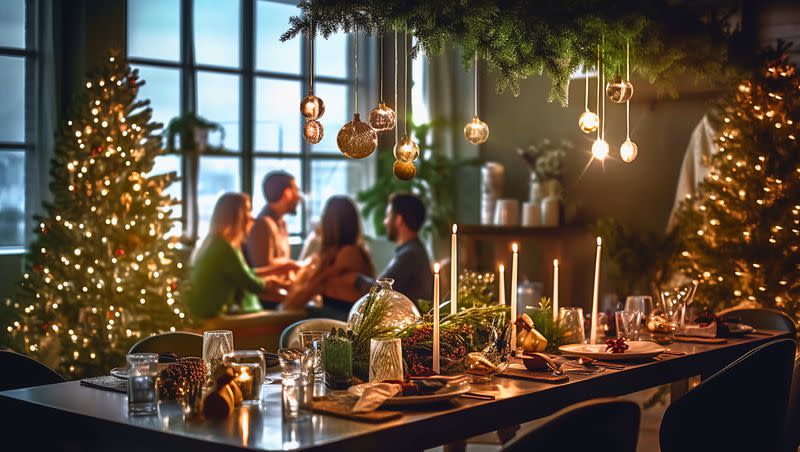From ‘Harry Potter’ to tapioca pudding: An ode to family traditions

We are knee-deep in the season of traditions — they’re fun, they’re meaningful and they can be powerful.
“Family traditions counter alienation and confusion,” writes author Susan Lieberman. “They help us define who we are; they provide something steady, reliable and safe in a confusing world.”
Traditions have the power to bind a family together as they create a sense of belonging and shared experiences.
Too often we take traditions for granted or dismiss them too easily, but they are a fundamental part of a strong family life. Traditions provide a source of shared identity, something that is especially important in “non-traditional” families like ours. Telling and retelling family lore, like the one about the “macaroni and cheese sandwich” or the vacation from you-know-where that was not funny at the time, but now serves as a way to see yourself as part of a bigger whole.
Khalil Gibran said, “Next to hunger and thirst, our most basic human need is for storytelling.” It’s how we make sense of our world, from macro to micro. When it comes to families, it’s the glue that binds. Stories and traditions go together like, well, macaroni and cheese.
Meg Cox, author of “The Book of New Family Traditions,” describes traditions as “any activity you purposefully repeat together as a family that includes heightened attentiveness and something extra that lifts it above the ordinary ruts.” Traditions, therefore, are not just repeated routines or habits, but are done intentionally.
Being intentional about creating and maintaining traditions was deliberate for me as we were deep in the throes of parenting. My children came from diverse backgrounds and experiences, as we built our family mostly through international adoption. So, we knew we needed to actively create a shared family culture. We did that through repetition of the daily and weekly things, but also through repeated traditions throughout the year.
Related
One of our daily routines that continues today is having dinner together. It might seem like a small thing, but there are real benefits to having dinners together. Anne Fishel, co-founder of The Family Dinner Project, a professor at Harvard Medical School and the author of “Home for Dinner” listed a few: increased vocabulary, higher achievement scores, better grades, healthier kids and parents, a lowering of high-risk teenage behaviors, increased resilience, increased optimism and better parent-child relationships.
In our case, it also helped promote healing from trauma, abandonment issues and food insecurity.
Traditions can bring comfort, too. One year, we did an elaborate “Harry Potter”-themed Christmas Eve. We had “butter beer” and “basilisk” (a Costco-sized pork loin), “Bertie Bott’s” every flavored jelly beans, costumes and custom-made wands for everyone. The analysis by the majority of our children? Fun, but not “Christmas.”
Even this year, when we scaled down our Christmas Eve festivities, one son told me he was “sad,” even though we moved most of the fun and games to Christmas Day.
Traditions change and evolve. They shouldn’t be shackles. I swore I would never do “Elf on the Shelf” but succumbed last year, to the delight of our youngest. I used to sew dozens of pairs of pajama pants but haven’t for a few years now. (Although I might revive that tradition just for grandkids.) I learned our family tradition of having tapioca pudding with a nut hidden in one serving came from Denmark and their tradition of eating rice pudding, or risengrød. My family of origin changed it to tapioca pudding, I’ve exchanged the nut for a cherry (choking hazard) and my brother changed the tapioca to chocolate pudding. And, if none of my children carry on that tradition, that’s OK, too.
We’re now in “dead week,” that week between Christmas and New Year’s. Our traditions include doing jigsaw puzzles (my husband), baking (me), games like “What Do You Meme” (kids version), Uno, Monopoly and Risk (the boys), staying up late and watching movies at home. We snack all week long on Chex Mix, homemade caramels, a variety of cookies, cheese balls, dips and veggies. On New Year’s Eve, we’ll do a huge charcuterie spread. We may or may not stay up until midnight.
Happy tradition-building!
Holly Richardson is the editor of Utah Policy.

